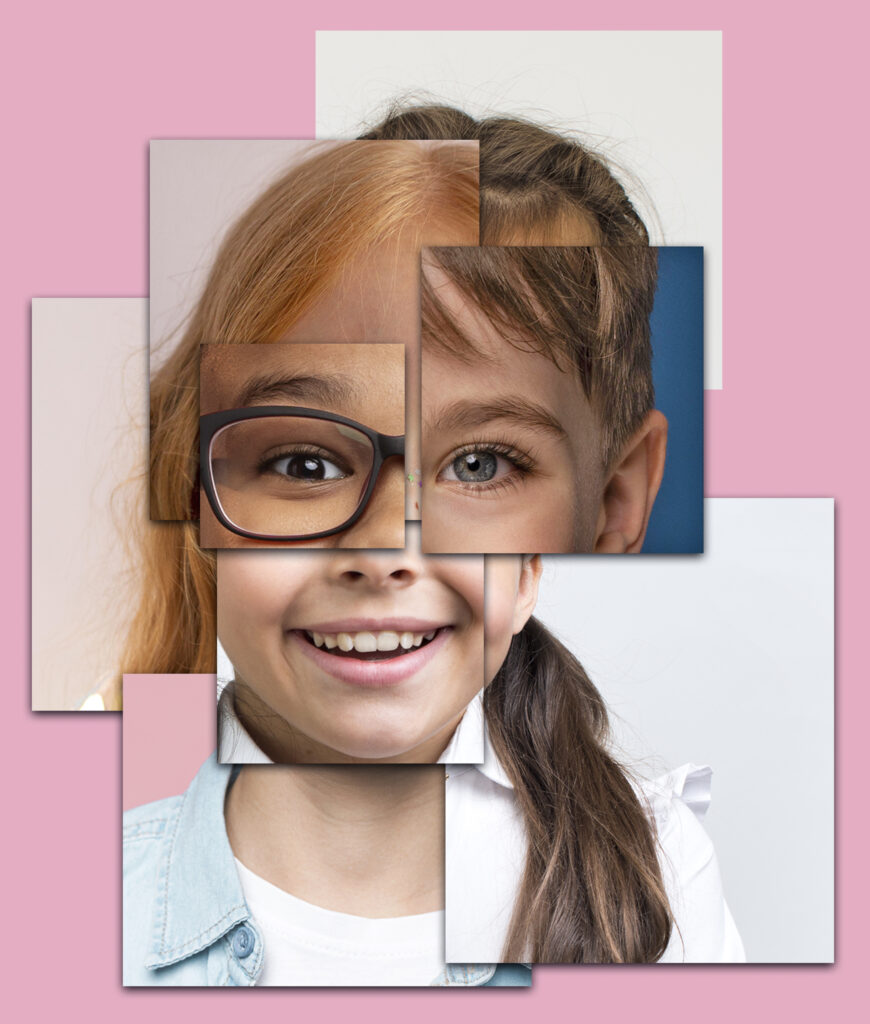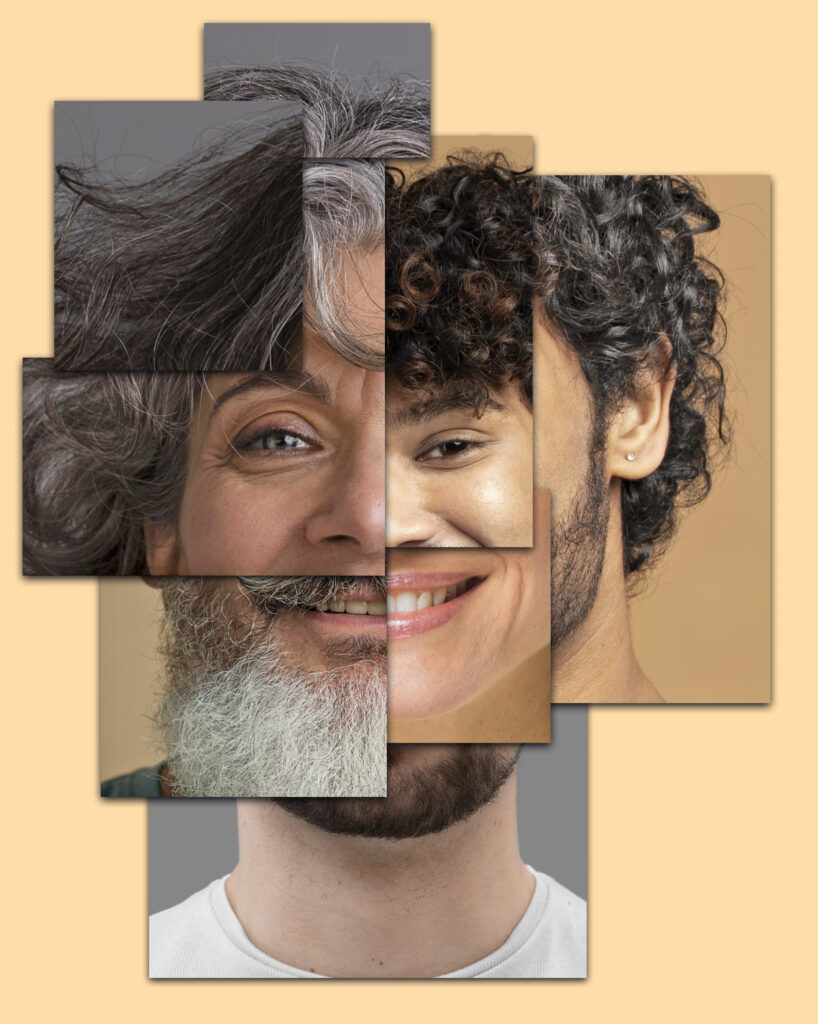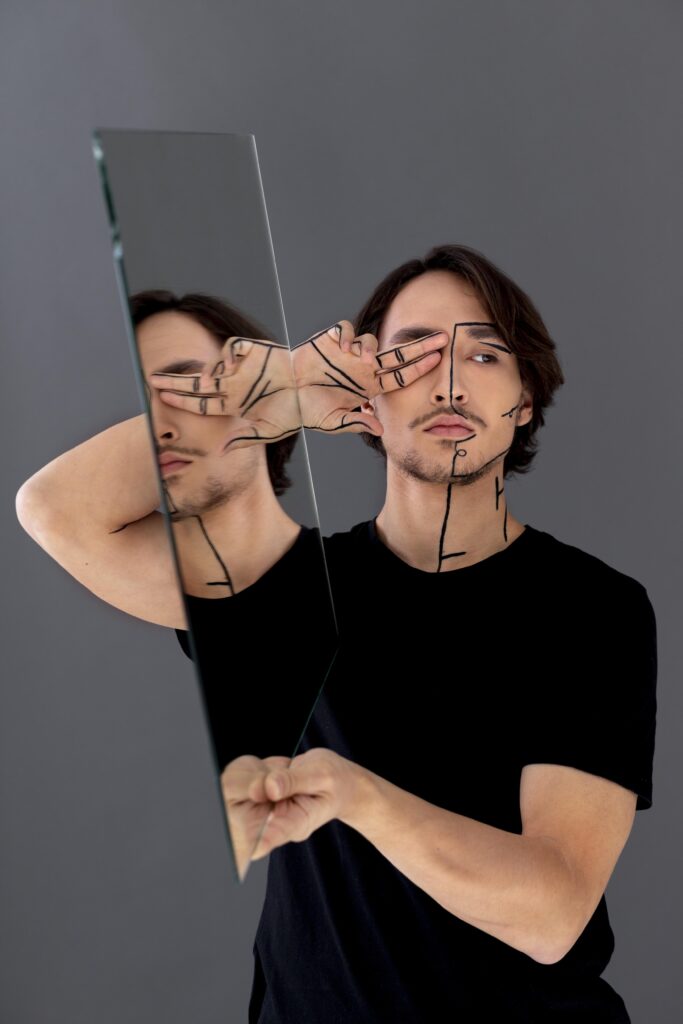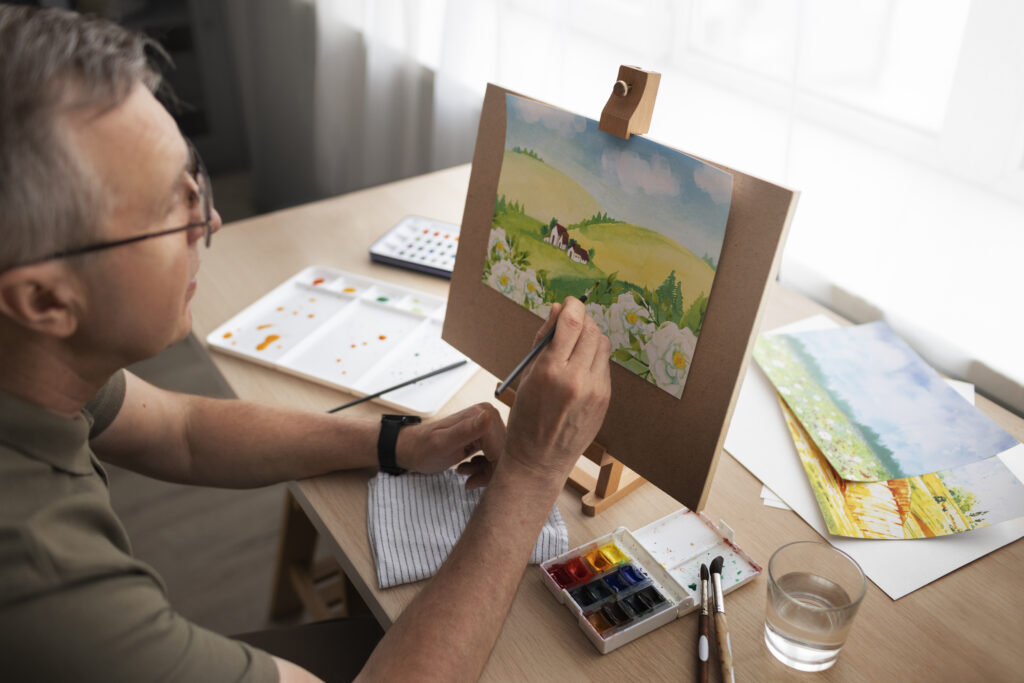Mastering Realism: 7 Tips for GAN Portrait Generation
Generative Adversarial Networks (GANs) have emerged as a groundbreaking tool in the evolving landscape of artificial intelligence, particularly in image synthesis. The capability to generate photorealistic portraits through GANs holds immense potential for industries ranging from entertainment to security.
However, achieving a level of realism that blurs the lines between digitally rendered images and authentic human portraits is a complex endeavor that requires a nuanced understanding of both the technology and the art it seeks to emulate.
As we embark on a discussion of the seven pivotal tips for crafting realistic GAN-generated portraits, it is imperative to consider the meticulous curation of datasets, the optimization of network architectures, and the fine-tuning of loss functions, among other critical factors. These guidelines are not mere suggestions but essential components in pursuing excellence in GAN output.
The implications of mastering these elements extend far beyond the mere creation of images; they represent a step towards getting the digital reflection of human essence. The subsequent discourse aims to not only inform but also to inspire further innovation in this dynamic field.
Key Takeaways
- Tailor the dataset precisely to the intended application and desired outcomes.
- Adjust layer depth to model complex features and nuances within the portraits.
- Optimize GAN architecture for superior portrait generation
- Utilize domain-specific knowledge and post-processing techniques to enhance realism and authenticity
Curate Your Dataset Meticulously

In the meticulous curation of a dataset for GAN portrait generation, it is imperative to tailor the collection precisely to the model’s intended application and desired outcomes. Data Science principles dictate that a well-curated dataset forms the backbone of any machine learning task, mainly when dealing with Unstructured Data like images.
The goal is to assemble a set of authentic images that will serve as high-quality data for the training process, thereby enhancing the quality of the generated portraits.
The curation process should not only focus on acquiring original data but also on its diversity and representativeness. This ensures that the generator and discriminator components of the GAN are exposed to a comprehensive array of facial features, expressions, and lighting conditions, contributing to the generation of realistic synthetic portraits that are indistinguishable from authentic photographs.
Moreover, rigorous cleaning and preprocessing of the dataset are crucial. This step involves the elimination of noise, irrelevant features, and potential biases, which, if left unchecked, could detrimentally influence the GAN’s learning trajectory.
Maintaining a balance between the quantity and quality of training data is essential to facilitate the GAN’s ability to synthesize diverse portraits that exhibit a high degree of visual fidelity.
Optimize Network Architecture
In the context of GAN portrait generation, network architecture optimization is pivotal in output quality. The careful adjustment of layer depth is crucial as it affects the network’s ability to model complex features and nuances within the portraits.
Moreover, the selection of activation functions can significantly influence the convergence behavior and stability of the generative model, necessitating a strategic approach to their application.
Layer Depth Importance
Understanding the pivotal role of layer depth within GAN architectures is essential for crafting high-quality, realistic portraits, as it directly influences the network’s ability to model complex features and textures.
In generative adversarial networks (GANs), both the generator and discriminator models play crucial roles:
- Generator Model
- Requires sufficient depth to generate realistic images with detailed textures
- Deep layers allow the model to learn hierarchical feature representations
- Discriminator Model
- Depth must align with the generator to effectively distinguish real from generated portraits.
- Balances the generative capability by assessing finer details
- Network Training
- Profound learning benefits from a harmonized layer depth, fostering stability
- Overly deep or shallow networks may hinder the learning process or lead to mode collapse.
Optimal layer configuration in both networks is paramount for the nuanced task of portrait generation.
Activation Function Choices
While layer depth in GANs is crucial for feature representation, the choice of activation functions further fine-tunes the network’s ability to generate detailed and realistic portraits.
In generative models, primarily components of a GAN, which are the generator and the discriminator, activation function choices directly influence the network’s performance. Leaky ReLU, preferred for its ability to maintain non-zero gradients, mitigates the dying ReLU issue, promoting consistent learning through the discriminator network.
Conversely, the Tanh function is pivotal in the generator’s output layer, normalizing outputs to fall within a specific range, which is imperative for image synthesis.
These functions shape how the networks process and generate new data, interact with the learning rate and loss function, and adapt based on the training dataset, optimizing the GAN architecture for superior portrait generation.
Employ Advanced Training Techniques

Advanced training techniques must be integrated into the Generative Adversarial Network (GAN) workflow to refine the quality of generated portraits. The progressive growth of layers allows for an incremental increase in resolution, which can lead to more refined and detailed images.
Proper regularization and stabilization methods are critical for maintaining the balance between the generator and discriminator, thereby ensuring the convergence of the network. When meticulously applied, these techniques can significantly enhance training stability and the fidelity of the resulting synthetic portraits.
Progressive Growing Layers
Progressive growth of layers in Generative Adversarial Networks (GANs) is an advanced training technique that enhances the model’s ability to generate detailed and realistic portrait images by incrementally increasing the complexity of both the generator and discriminator architectures. This method significantly refines the creation of new images, creating more natural human portraits.
- Critical Benefits of Progressive Growing Layers:
- Stabilized Training: Gradually scaling up the resolution of images helps maintain training stability.
- Enhanced Detail: Each added layer allows the model to capture finer details, contributing to the realism of the generated portraits.
- Feedback Loop Efficiency: The progressive nature establishes a more effective feedback loop between the generator and the discriminator, improving the model’s ability to distinguish between authentic and generated images.
Regularization and Stabilization Methods

Regularization and stabilization methods are the backbone of advanced training techniques, ensuring that GANs generate high-quality portraits without succumbing to common issues such as training divergence or mode collapse. These methods are integral to generative adversarial networks (GANs) robustness, enhancing the learning algorithm’s ability to generate realistic images.
Weight regularization, gradient penalty, and spectral normalization are pivotal in maintaining equilibrium between the generator and discriminator, thus preventing adversarial training from becoming unstable.
Additionally, feature matching and minibatch discrimination are employed to further refine the data synthesis process, ensuring diversity and fidelity in the output.
Fine-Tune Loss Functions
Adjusting the importance of different loss terms through fine-tuning enables GANs to optimize generation processes with higher specificity to the desired output characteristics.
Generative adversarial networks (GANs) leverage fine-tune loss functions to refine their ability to generate realistic portraits, ensuring that the generated images closely mimic the distribution of real-world data. This process involves a delicate balance between the discriminator’s job of accurately classifying images and the generator’s task of creating outputs that can fool the discriminator.
- Adapting Loss Functions:
- Customization: Tailor loss functions to emphasize specific features or fidelity in the generated images.
- Stabilization: Address training issues such as mode collapse by guiding the model to generate diverse and stable outputs.
- Precision: Enhance the resolution and detail in portraits by focusing on loss terms related to high-quality feature generation.
The discriminator’s feedback is essential in this process, as it shapes the gradient updates for the generator. Fine-tuning loss functions allows the model to generate portraits that deceive the discriminator and exhibit high realism and detail. This iterative refinement is critical to producing high-quality synthetic images that are increasingly difficult to distinguish from authentic photographs.
Regularize to Avoid Overfitting

Practitioners implement various regularization strategies to mitigate the risk of overfitting in GAN portrait generation. These strategies include L1 or L2 norms, dropout layers, and weight decay, essential for maintaining the model’s generalizability.
Generative adversarial networks (GANs) are known for their ability to create new and realistic human portraits by learning from a dataset of images. However, the challenge arises when the network, through excessive training, becomes too tailored to the training data, limiting its ability to generate new images that deviate from the learned examples.
Incorporating L1 or L2 regularization penalizes the model’s parameters, effectively constraining the complexity of the network. This method helps ensure that the generated portraits are not just replicas of the training set.
Dropout layers, randomly deactivating a subset of neurons during training, introduce noise into the network, which can prevent overfitting by promoting the creation of robust features.
Techniques like weight decay adjust the learning process to avoid the amplification of weights that could lead to overfitting. Furthermore, batch normalization normalizes the input of each layer to stabilize the learning process and improve convergence.
These strategies are crucial when training GANs to ensure that the 103rd or any subsequent portrait remains as realistic and unique as the first.
Incorporate Domain-Specific Knowledge
While regularization techniques are crucial to mitigating overfitting in GAN portrait generation, incorporating domain-specific knowledge further enhances the authenticity and diversity of the generated images. Generative adversarial networks (GANs) leverage the power of artificial intelligence to create an image that is often indistinguishable from accurate data. To achieve this, domain-specific knowledge is a crucial component that informs the GAN architecture and training process.
- Understand Domain-Specific Features
- Facial features, proportions, and skin textures unique to the subject matter.
- Historical and cultural context of the portraits for Generating Realistic images.
- Incorporate Domain Attributes
- Facial expressions and emotions enrich the portraits with human-like depth.
- Cultural nuances provide a sense of authenticity and place within a specific domain.
- Enhance with Domain-Specific Techniques
- Preprocessing strategies tailored to the unique challenges of the Portrait Generation.
- Image-to-image translation methodologies that adapt domain-specific aesthetics.
Integrating domain-specific constraints into the loss functions ensures that machine learning models produce outcomes reflecting human portraits’ subtleties. Collaboration with domain experts can refine the generative process, aligning the artificial creations with the nuanced expectations of the domain, thus bridging the gap between what is generated and what is real.
Post-Processing for Enhanced Realism

Enhancing the color balance and tone through post-processing is essential in transcending the uncanny valley and achieving realism in GAN-generated portraits that rival authentic human photographs. GANs (Generative Adversarial Networks), used to generate highly realistic images, are composed of two main components: the generator and the discriminator. The generator network creates new, synthetic images while the discriminator evaluates them against actual data, pushing the model to generate outputs indistinguishable from accurate human portraits.
Post-processing plays a pivotal role in refining the raw output of GANs. Adjustments to color and tone are meticulously calibrated to mirror the complexity of human skin and the subtleties of natural lighting. Introducing calculated imperfections such as skin texture and irregularities adds a layer of authenticity, crucial for the portraits to be perceived as genuine.
Fine-tuning facial features requires a precise and analytical approach to ensure proportions match those in nature. Adding natural elements like hair strands and wrinkles, along with the strategic placement of shadows, lends depth and character to the portraits. Post-processing enables the creation of GAN-generated portraits in different styles, each requiring a tailored approach to enhance the realism of the final image.
FAQs
What is GAN-based portrait generation?
GAN-based portrait generation uses Generative Adversarial Networks to create realistic and high-quality portrait images. GANs consist of a generator and a discriminator, trained simultaneously to produce images indistinguishable from accurate portraits.
How do GANs work in portrait generation?
GANs train a generator to create images and a discriminator to distinguish between authentic and generated images. The two networks are in a constant adversarial relationship, with the generator trying to produce realistic images and the discriminator trying to differentiate between authentic and generated images.
What are some tips for training a GAN for realistic portrait generation?
Ensure a diverse and high-quality dataset for training, use proper normalization techniques, experiment with different architectures, and carefully balance the training process to avoid mode collapse or instability.
How important is the dataset in GAN portrait generation?
The dataset is crucial for realistic portrait generation. A diverse and well-curated dataset with a broad range of facial features, expressions, and lighting conditions helps the GAN model learn to generate more realistic and varied portraits.
What techniques can be used to improve the diversity of generated portraits?
Augment the dataset with variations in pose, lighting, age, ethnicity, and other factors. This helps the GAN model learn a broader range of features and produce more diverse and realistic portraits.
